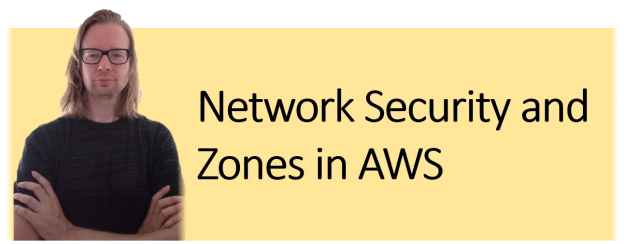A couple of months ago, I posted an article about IaaS and network perimeter protection for GCP and Azure. Today, I look at the related concepts in Amazon Web Services (AWS).
Structuring Networks in AWS
The concept of the Amazon Virtual Privat Cloud (VPC) and Subnets are the AWS terms for structuring the network. A VPC consists of a continuous IP address range represented by a CIDR block, e.g., 10.0.16.0/24. A network design with overlapping IP ranges for different VPCs is technically possible though it can result in issues when connecting, aka peering, such VPCs later.
The network design divides the IP range of a VPC further into Subnets. Subnets are the canvases into which engineers deploy VMs – EC2 instances in AWS speak, short for Elastic Compute Cloud (Figure 1). Subnets belonging to the same VPC must not have overlapping IP ranges, but they do not have to consume the complete range. Non-used IP ranges ease responding to changing business needs and IT landscapes. So, everything is similar to what we know from GCP and Azure. The way subnets are protected, however, differs slightly.
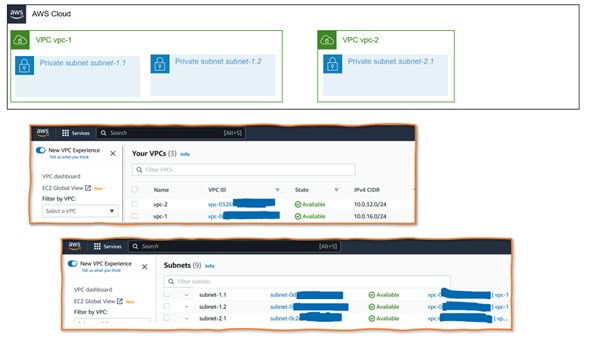
Figure 1: Network diagram with VPCs and Subnets and corresponding screens in the AWS GUI
Controlling Network Traffic with Network ACLs
One AWS concept for securing the subnet perimeter is the Network Access Control Lists (Network ACLs) feature. Network ACLs allow or deny ingress and egress traffic. They act as a stateless firewall that checks traffic against a simple ruleset. Inbound rules (Figure 2, A) allow or deny traffic from specified IP addresses outside the subnet. Outbound rules (Figure 2, B) inspect traffic leaving the subnet. In addition to the source or target IP, rules can consider the port number (e.g., 23, 8080) and the protocol type. If there are conflicting rules, the priority of the rules is the deciding factor.
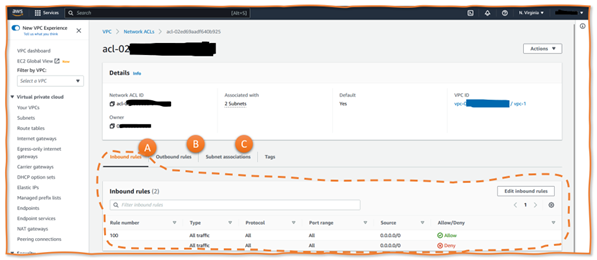
Figure 2: Sample Network ACL
When designing a concrete network, architects should be aware of default behavior and setups – and how Network ACLs, VPCs, and subnets relate. First, each VPC has a default Network ACL. It allows all ingress and egress traffic to and from the subnets within the VPC. However, the VPC (by default) has no connectivity with the internet, external networks, or other AWS VPC, be it in the same or another AWS account (we discuss this in the following section). Engineers can either change the default Network ACL or create a new one and associate it with one or more subnets of the same VPC.
A simplistic example is a VPC hosting several web applications. Each application might have a frontend and a backend subnet. Frontend subnets have open HTTP and HTTPS ports plus an open JDBC port to connect to the database backend subnets, which allow only JDBC traffic. Figure 3 illustrates such a scenario. VPC A has a Network ACL “Frontends” associated with Subnets SN1 and SN2. There is a differenet second Network ACL “DB Backend” associated with Subnet SN3. VPC A has a default Network ACL, but it is not in use. In contrast, the default Network ACL for VPC B is associated with the only subnet there, SN7.
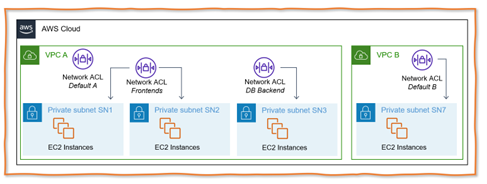
Figure 3: Understanding Network Access Control Lists NACLs) for AWS IaaS Workloads
Security Groups
In addition to Network ACLs, AWS provides a more sophisticated second feature for controlling network traffic: Security Groups. While Network ACLs impact the subnet perimeter, Security Groups focus on the traffic going through the network interfaces of individual VMs (or EC2 instances), for which AWS uses the term Elastic Network Interface (ENI). Applicable Security Groups can be configured per ENI. Each ENI must have at least one but can also have multiple Security Groups associated.
The rules for Security Groups specify the protocol as well as the source, respectively target IP addresses on the target with the following main differences:
- Security Groups control traffic going through the ENI. Thus, they can also restrict traffic within a subnet, and different VMs within the same network can have different applicable Security Groups.
- Security Groups act as stateful firewalls. Only the initiating in- or outbound traffic has to be allowed. Reply traffic is allowed automatically.
- There are only “allow” rules, no “deny” rules. Adding an additional Security Group to a VM might result in more ports, protocols, and target or source IPs (or Security Groups) being allowed. Adding rules to Security Groups never restricts or forbids traffic.
- By default, all outgoing traffic is allowed, and all incoming traffic is denied.
An important aspect from the security perspective is that EC2 instances can have secondary ENIs with a second IPv4 address which puts EC2 instances logically into two subnets. There are even more options in a world with IPv6.
Figure 4 illustrates a network design with two subnets in one VPC with one default Security Group and a newly created second security group named SG-1. Both apply to the ENI2 network interface, whereas all other VMs only have one security group. The example also illustrates two network interfaces being attached to the same EC2 instance, which, as a result, becomes part of subnet SN1 and SN2.
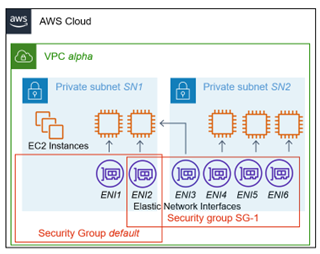
Figure 4: Security Groups as Means of Protecting IaaS Workloads in AWS
Connecting VPCs with the Outside
A VPC without connectivity to other VPCs or the internet is securely protected against outside attacks – and completely useless. Suppose users, admins, customers, or other programs cannot start any processing because no one can reach the EC2 instances, and they cannot access outcomes and results. In that case, there is no need to have a VPC At least some EC2 instances, respectively, subnets and VPCs they belong to must interact with external servers and services. It creates an attack surface, but that is unavoidable and taggling the risks is part of the network security design.
VPC Peering is the essential concept enabling communication between VPCs belonging to the same AWS account or other AWS accounts within the same AWS organization. Components and VMs in peered VPCs interact as if they belong to the same VPC. All traffic stays internal. No traffic goes via the internet, keeping the attack surface low regarding outside attacks.
Shared VPCs are a similar concept. AWS accounts can share a VPC with other AWS accounts within the same AWS organization. Then, the other AWS accounts can create and manage components within this shared VPC. However, while everyone uses the same Shared VPC, resources of the different AWS accounts are managed and seen only by the AWS accounts to which they belong. AWS markets Shared VPCs as a feature to reduce the number of VPCs while still ensuring high interconnectivity, separate billing, and isolation or access control.
VPC Peering and Shared VPCs are powerful concepts but are limited to the IT landscape of one single company. However, Internet Gateways and NAT Gateways are key AWS features when companies interact with others. In this context, Architects have to understand: Do they need only traffic from within a subnet or VPC to the internet, or should EC2 instances be directly reachable from the internet? The latter, obviously, poses a higher attack surface and security risk since attackers can directly reach out to VMs.
Exposure to the internet requires EC2 instances to have a Public IP and the subnet/VPC to have an Internet Gateway component with a suitable routing table. Such a design allows ingress and egress traffic from and to the internet.
If EC2 instances only need to initiate egress traffic, a NAT Gateway is the solution. It takes invocations from EC2 instances within a subnet, routes them to external IPs, and sends replies back to the initiating EC2 instance. On the way, the NAT replaces the internal caller IP with its external IP and vice versa for replies.
AWS comes with various additional and less-frequently used concepts. Three features or services center around interactions between an on-premise and cloud infrastructure: AWS Virtual Private Network, AWS Direct Connect (dedicated, private connections), and AWS Transit Gateways (managing hybrid networks).
Finally, there is a connectivity or network feature named AWS Private Link. It is less relevant for the IaaS world of EC2 but crucial for application landscapes incorporating AWS PaaS and DBaaS services. I will cover the concept in one of my next posts.
